Each step of the transition slowly progresses adult dogs to a raw diet. The second step of the raw feeding transition introduces more muscle meat variety.
Simple meals are encouraged when beginning the raw feeding transition. The second step of the raw transition introduces red muscle meat. Meals should already include lean white meat, raw meaty bones, and vegetables from Step One.
Introduce Red Meat
Add a red muscle meat protein to meals.
Raw Meaty Bones Remain Consistent
Continue feeding raw meaty bones from lean, white proteins.
Fiber-Based Vegetables Remain Consistent
Continue feeding fiber-based vegetables throughout the transition.
Don’t rush the raw transition process. It is normal to get excited and want to push forward. However, it is best to allow the dog to set the pace of the transition. Some dogs take effortlessly to raw while others need more time.
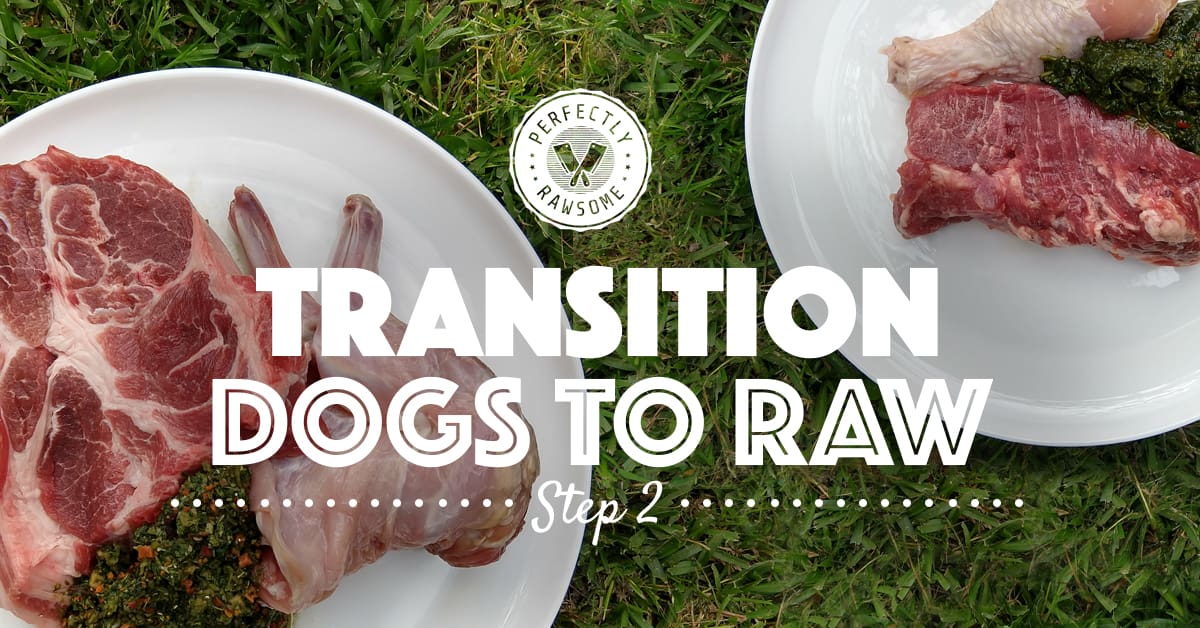
Introduce Red Muscle Meat
The second step of the raw feeding transition does not match BARF or PMR model ratios because organs are not fed. The ratios for step two are similar to step one, but the muscle meat portion includes red meat. White meat will need to be reduced accordingly to accommodate the new red meat.
Some dogs require more bone to maintain firm and consistent stool in comparison to others. The following rations are starting guidelines, not rules, and should be modified for each dog’s individual needs. The bone ratio indicates the amount of actual bone required, and does not include the meat on the bone. Some calculations will be required to determine how much raw meaty bone to feed.
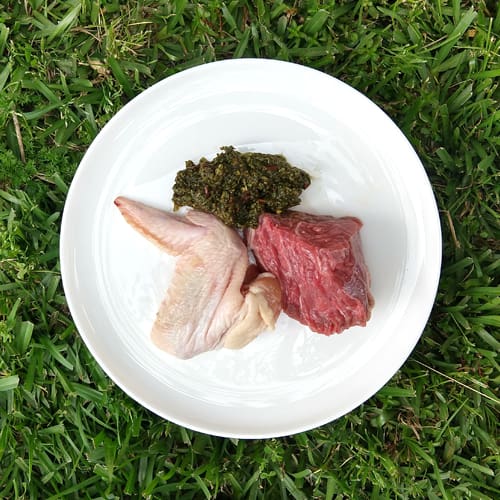
Small Dog Meal Example
Beef Muscle Meat
Chicken Wing
Veggie Blend
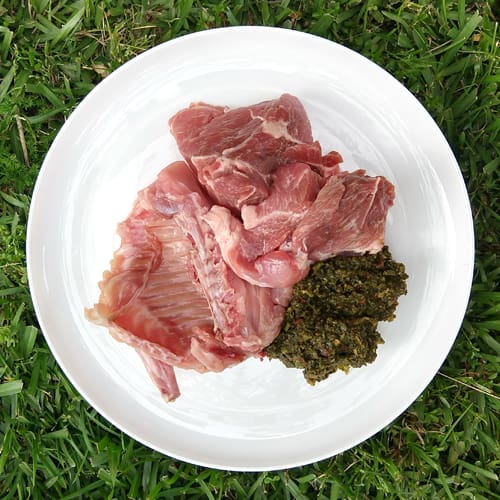
Large Dog Meal Example
Pork Muscle Meat
Rabbit Ribs, Spine, & Front Leg
Veggie Blend
Red Muscle Meat Options
Raw meaty bones and vegetables in step two should remain the same as the ingredients chosen in step one. Step two introduces red meat which increases the nutritional content of the meals. Red muscle meat is higher in water-soluble vitamins and minerals in comparison to lean white meat. This makes red meat an ideal protein choice for raw diets.
Additionally, fattier cuts of red muscle meat helps increase dietary fat within the diet. Fat is an essential nutrient for energy metabolism and the transport of nutrients throughout the body.
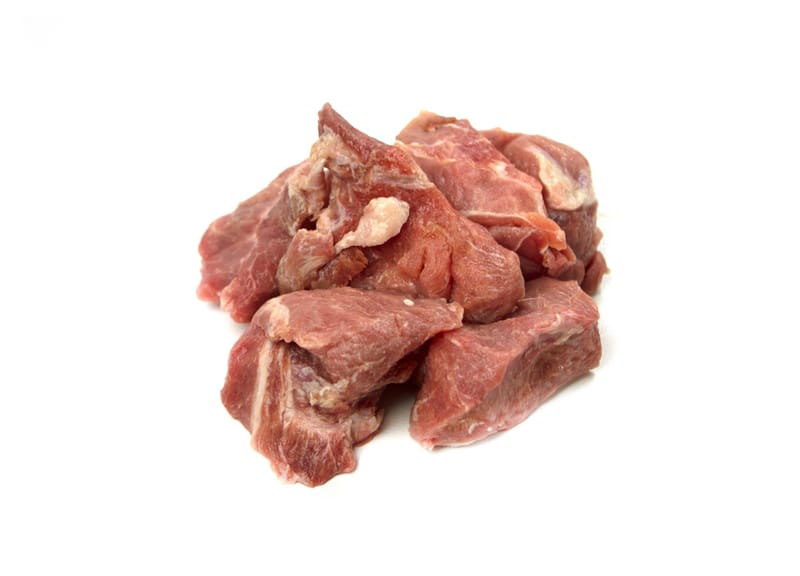
Boneless Pork Muscle Meat
Pork is the ideal red meat protein to introduce in step two of the transition process. Pork is higher in amino acids, water-soluble vitamins, and fats in comparison to white meat. In particular, pork is an excellent protein for meeting B vitamin requirements.
Different cuts of pork will yield different fat levels. On average, pork shoulder is higher in fat in comparison to pork loin.
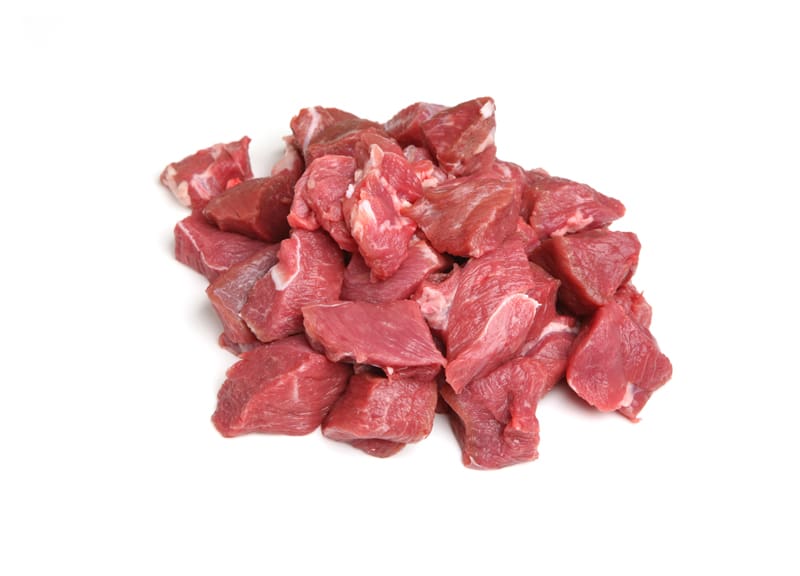
Boneless Beef Muscle Meat
Beef is an alternative to pork for step two of the transition process. Like pork, raw beef muscle meat is higher in many essential nutrients in comparison to white meat.
Different cuts of beef will yield different fat levels. Some cuts of beef are very lean while others are higher in fat.
Intolerances & Allergies
Some dogs cannot consume pork or beef due to an allergy or intolerance. In these situations, these items should be avoided. Lamb, goat, or wild game muscle meat are alternative red meat proteins.
Calculate Ingredient Amounts
It is recommended to slowly introduce red meat in step two of the transition process. A slow introduction is a proactive measure to prevent gastrointestinal (GI) upset.
Start with adding 25% red meat to the muscle meat portion and decrease white meat accordingly. Increase to 50% red meat when stools are firm and consistent.
Step two is not intended or recommended to feed long-term.
The second step of the raw feeding transition is not complete with all essential nutrients and should not be fed long-term. Proceed to step three once the dog has maintained firm and consistent stool for a minimum of 3-7 days.
CLOSING COMMENTS
Step two of the raw feeding transition is designed to introduce adult dogs to red muscle meat. Transitioning a dog to raw is exciting, but it is best to allow the dog to set the pace. Once stools have maintained firm and consistent for three to seven days, proceed to step three of the transition.
Red Muscle Meat
Step two introduces red muscle meat to increase the nutritional content of the raw diet. Start with adding 25% red meat to the muscle meat portion and decrease white meat accordingly. Increase to 50% red meat when stools are firm and consistent.
Raw Meaty Bones & Vegetables
Continue feeding the same raw meaty bones and vegetables from step one. Ingredient variety will come once the dog is fully transitioned to a raw diet.
